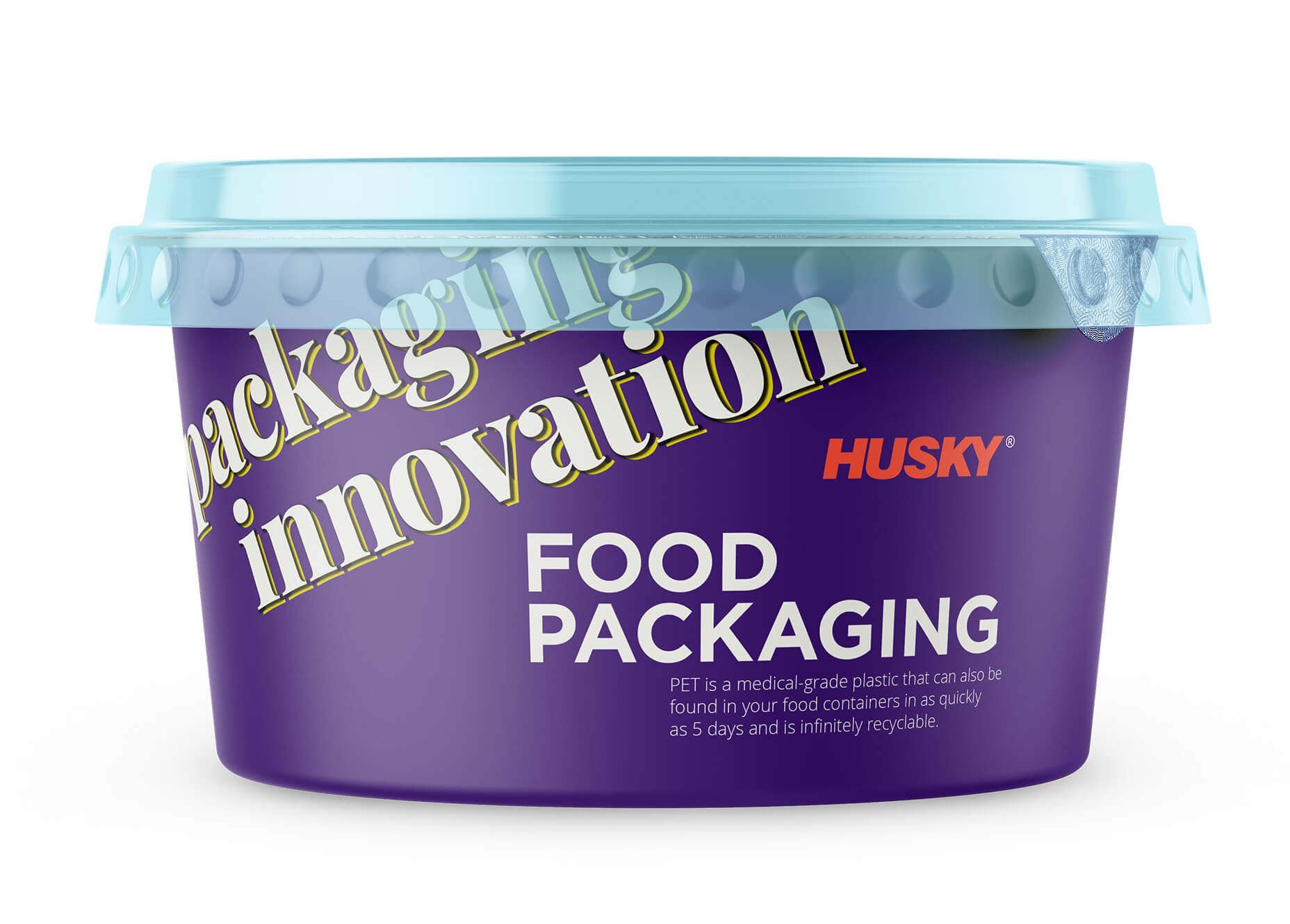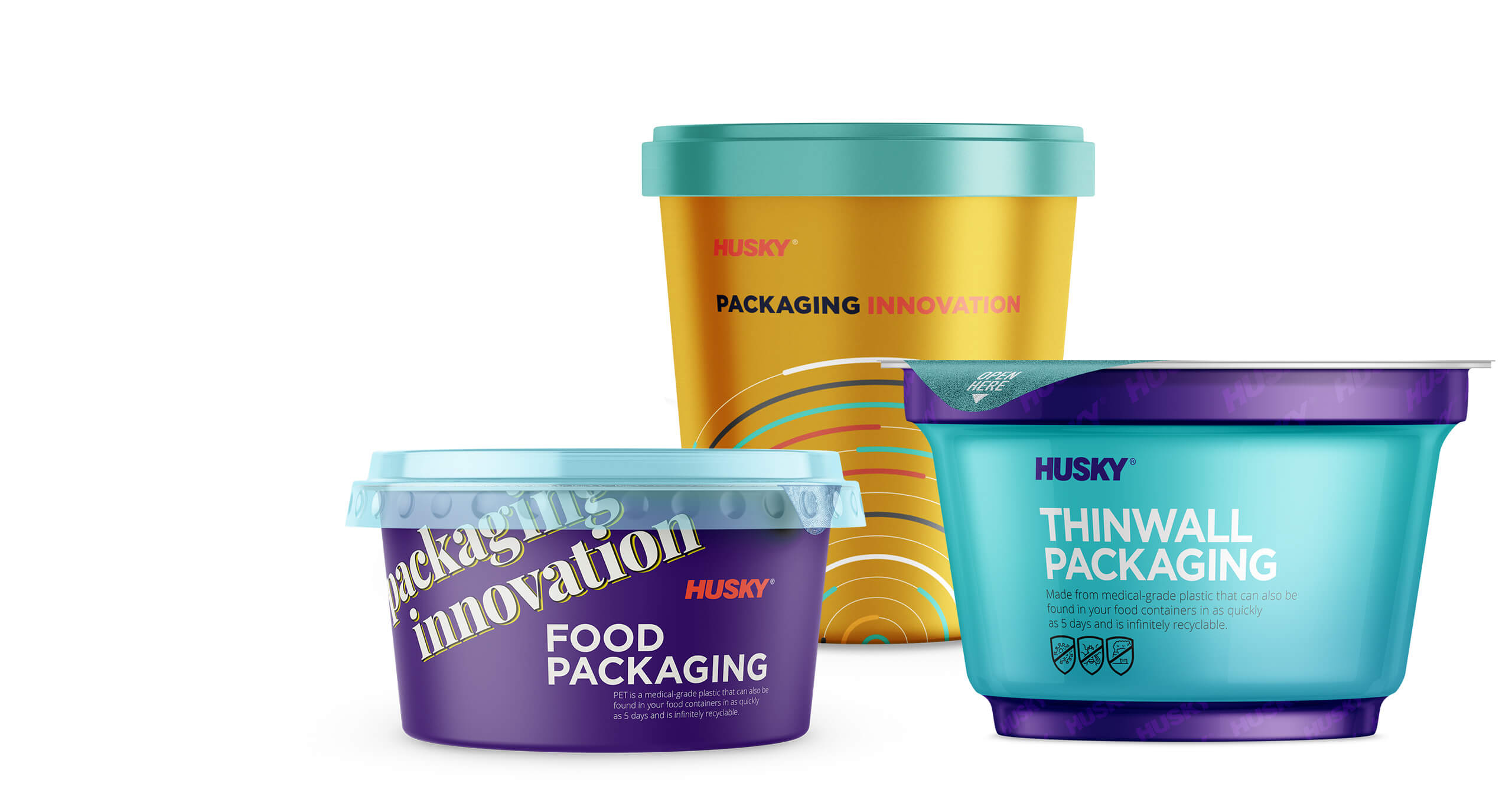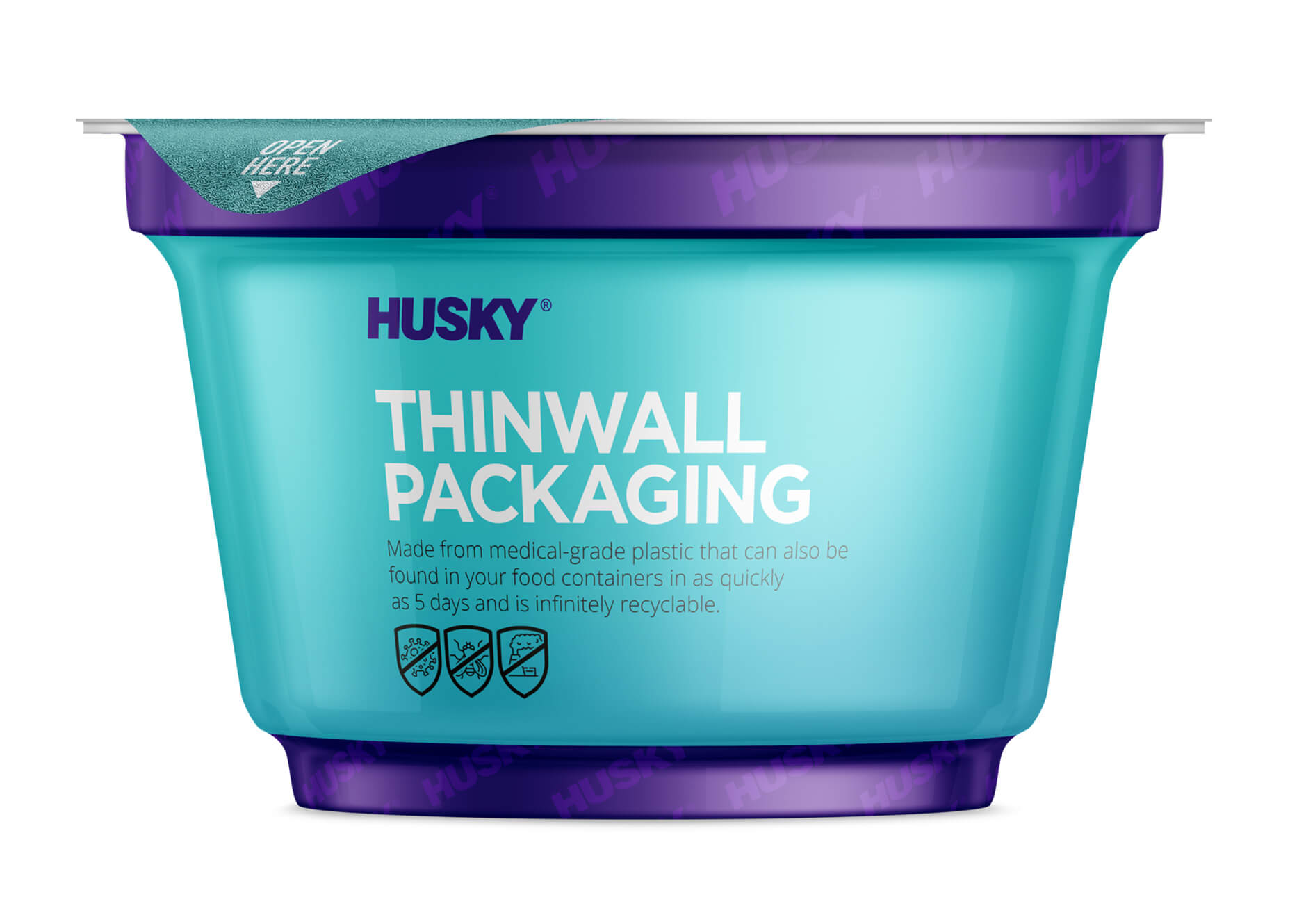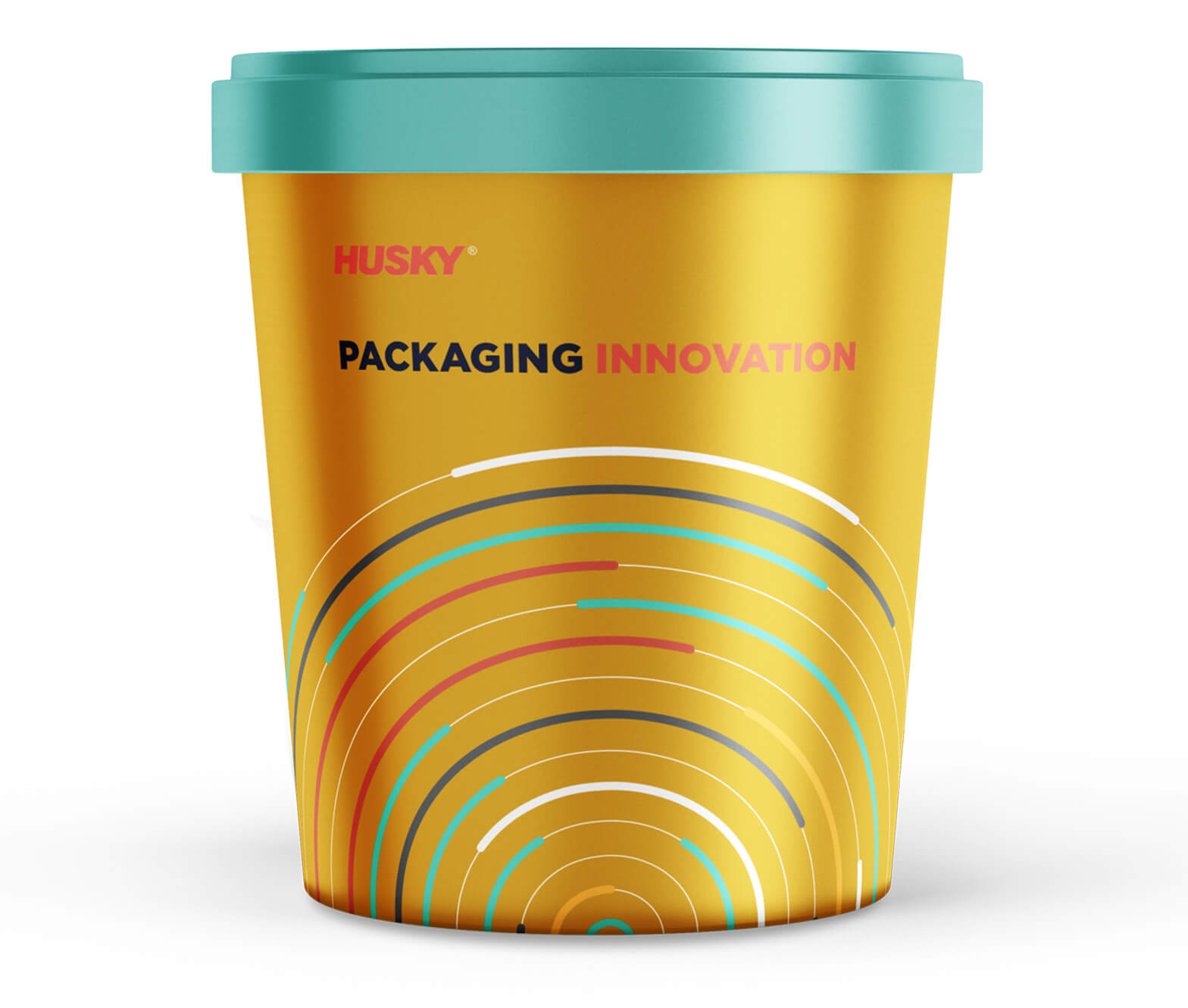4 Questions to Ask When Considering a Thinwall Packaging Solution
If you are planning to invest in a new thinwall packaging solution, read these key questions to ask before investing in an injection molding machine.
A series of market trends are “changing the game” for packaging and introducing new challenges and opportunities for food and consumer packaged goods (CPG) producers.
COVID-19 is clearly the most dominant of these market forces right now, but several other trends are also making a big impact in the industry and introducing new considerations for packaging. These include sustainability, rising adoption of e-commerce, changing consumer preferences, and increased product diversification and competition.
In light of these trends and new considerations, package designers and manufacturers are rethinking what they need from a packaging system. If you are planning to invest in a new thinwall packaging solution, here are some of the key questions to ask:
-
How much design flexibility does the packaging system provide?
Across food and consumer packaged goods, consumers are demanding more personalized and premium product experiences, which is driving a proliferation of SKUs. Increased competition is creating a greater need for product differentiation and shelf appeal, which raises the bar for packaging designs.
All of this means that your next injection molding system for packaging must be capable of producing a wide range of designs. What should you look for to ensure the greatest design flexibility?
First, the injection molding system will need to deliver and sustain high levels of performance and precision in controlling polymer melt flow. High fill rates, combined with equal pressure and temperature in each cavity of a multi-cavity mold, are essential for the mass production of parts with challenging geometry and features, such as large-volume containers, thin part walls, live hinges (flip-top closures) and thin structural features like ribs.
Another major feature that will provide design flexibility, allowing you to add new features and functionality, is the ability to incorporate two different resins in the same part. For example, with two-component molding you can:
- Increase the shelf life of perishable consumer packaged goods [Links to https://www.husky.co/en/industries/consumer-goods/] by adding a thin layer of barrier material
- Add uniqueness and new functionality to your design by combining resins with different mechanical properties (for example, stiff and flexible materials in the same part)
- Eliminate the need for separate assembly of parts with hinged lids or handles through the sequential introduction of two different resins (overmolding)
The ability of the packaging system to integrate with peripheral equipment is another important design flexibility consideration. For example, in-mold labeling (or IML), in which a thin film with high-resolution graphics, and sometimes barrier properties, is bonded with the molded part, is a very popular method for decorating thinwall parts, because it can significantly increase shelf appeal and even shelf life. If you want to successfully incorporate in-mold labelling into your consumer packaged goods designs, you will need an injection molding system that can integrate very precisely with a side-entry or six-axis robot.
-
How will the system help you meet your profitability targets?
The financial and economic considerations of a system are becoming more and more important as COVID-19 and increased competition place producers under greater financial pressures.
As you consider the economic impact of your next injection molding machine or system, you need to focus on return on investment (ROI)! When comparing different manufacturing solutions, it is important to look beyond purchase price. Cashflow and payback time are more important metrics of your profitability.
Making a capital investment is a long-term commitment, and therefore it should be evaluated over an economic horizon of at least five years. Such an approach will allow you to factor in your anticipated growth as well as your evolving profitability targets.
The following considerations should be made during the selection of a new manufacturing solution:
- System productivity: Can it deliver high levels of output and meet your anticipated growth targets?
- Resin costs: Can it support lightweight designs to help you minimize resin costs? What is the expected level of scrap?
- Overall Equipment Effectiveness (OEE): What are the expected levels of scrap and unplanned downtime? What are its maintenance requirements? Is it easy to service, and what is the availability of spare parts? Does the manufacturer offer solutions that offset OEE erosion over time?
- Power management: Does it feature technologies that minimize power use?
- Labor requirements: Is the operation of the system intuitive, avoiding the need for specialized workforce and long setup times? Can the system run autonomously without the need for frequent observation and servicing?
- System longevity: What is the overall expected lifespan of the system?
-
How will the system support your operational demands?
As you look beyond the purchase to the operation of the injection molding system throughout its lifespan, your focus should be on executing your business strategy as effectively and consistently as possible. Achieving operational excellence will allow you to lower your risks and operating costs and increase your revenue.
Your new packaging system should integrate flawlessly in your production flow, delivering the required output with high effectiveness and efficiency. Engaged and responsive service provided by the manufacturer of the packaging solution is a critical factor in minimizing costly downtime occurrences.
A manufacturing system that is aligned with Industry 4.0 principles will provide advanced connectivity and automation options, as well as real-time data on key production metrics. That is very important for the execution of a company-wide operational strategy.
Here are several important factors to consider:
- Does the injection molding machine or system support fast, easy design changeovers to minimize downtime and support a wider variety of SKUs?
- Does the system manufacturer offer engaged and effective service? Do they have a 24/7 hotline? Do they have locally based technicians and spare part centers?
- Does the system manufacturer offer service packages to help minimize maintenance costs and downtime? Do they offer proactive packages that can prevent downtime and maintain the system OEE over time?
- Can the system be monitored or serviced remotely? (This has become a major consideration since the emergence of COVID-19.)
-
How will the system support your sustainability goals?
Sustainability is becoming a bigger and bigger factor in consumer packaged goods design as companies strive to meet carbon footprint targets and respond to consumer demand for green packaging.
Besides powerful social movements, local and larger-scale governments are also gearing up to enforce sustainability and the circular economy. New laws and regulations will soon be mandating a minimum amount of recycled content in plastic packaging. Energy efficiency and minimum waste incentives and rebate programs are also available for qualified companies.
Keeping pace with these changes, plastic packaging companies need to incorporate sustainability and the circular economy deeper into their operational and marketing strategies.
The right injection molding system can play a big part in helping you meet these sustainability goals. Here are some key questions to ask:
- Does the system provide the capability to process high ratios of recycled resin?
- Can the system ensure high and consistent part quality at varying percentages of recycled resin?
- Does the system have the accuracy and capability required to minimize waste and reduce resin use via lightweight packaging designs?
- Does the system offer power management capabilities to support energy conservation efforts?
A lot is changing in the food and consumer packaged goods industries, and these changes aren’t always easy to navigate. The good news is that injection molding systems for packaging are evolving to help you meet these new challenges and opportunities.
Need help choosing the right packaging system for your needs? Please get in touch.
Let Husky injection molding solutions and systems help you open new pathways to greater profitability in consumer goods packaging.



